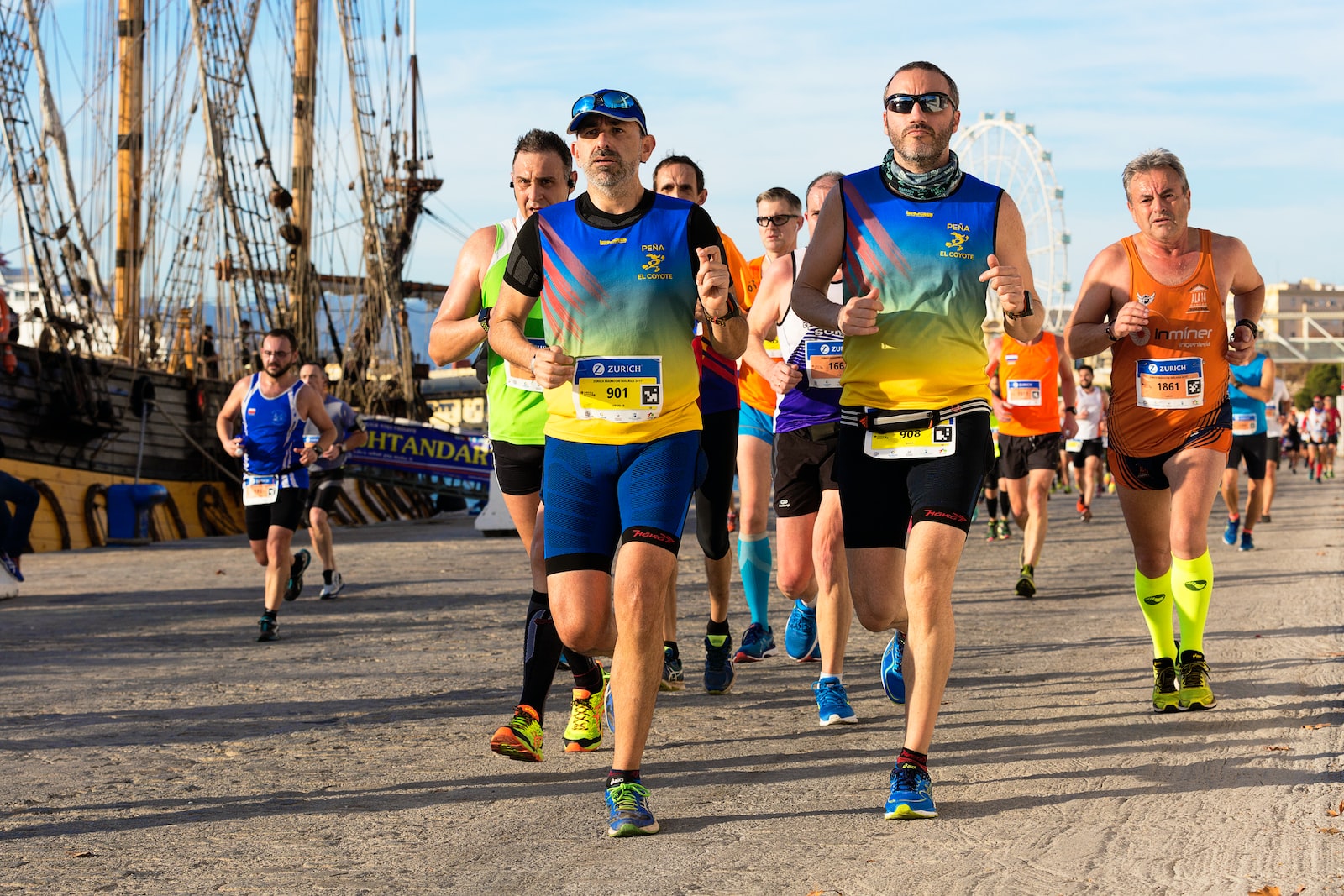Running Strength and Stability

There are three things that improve run speed for us, 3 factors. The first affects all three disciplines in triathlon, the speed/intensity of training. The second, more importantly, is technique and being more efficient, something we try to cover every week on here with the #RunningFormFriday tips. Finally – and possibly most important of all – is muscular and postural strength.
Endurance athletes (and women, sorry to stereotype) are scared of doing strength work, for what I see as two main reasons: Firstly, there is the worry that doing strength work builds muscle bulk, which is then seen as unattractive, or as an unnecessary hindrance to running. This is INCORRECT! Yes you can tone up a little more by doing strength exercises but you won’t automatically become like Jodie Marsh or Arnie just by doing some squats and sit ups! That takes a lot of time, effort, particular training and dietary requirements – and most probably some additional help. Secondly runners see running as the most effective way to train, which is understandable. However if you are busy trying to work on weak muscles and poor kinetic chains, you’re more at risk of injury.
Here are a handful of exercises that you can do – that don’t require extra kit or going to the gym – that will help your running. I’ll also explain how and why each exercise will help.
Plank:
Prop yourself up on your elbows with your feet slightly apart. Make sure your body is aligned, your abdominal muscles are tight, and shoulders are directly above the elbows and down and back, not hunched up. Hold this position for 30 seconds to one minute. Gradually add time as your core gets stronger.
This will help you run tall, with your hips in alignment, without your back collapsing.
Extensions: – Lift a foot off the floor (without dropping the hips), or go to moving planks where you move up into a press up position and back down again.
Side Plank:
Similar to the plank, but on your side. Elbow under shoulder, hips vertical (not rocking backward), legs out straight.
This will help give you the elastic strength around your sides so that you can drive your arms back and help get the lift from the opposite leg.
Extensions: – Lift your arm in the air vertically, potentially lift your top leg, or even moving side planks where you sink your hips down, then push back up through your side muscles. All the time your hips stay vertical.
Squats:
A simple favourite! Plant your feet. They should be flat on the ground, about shoulder-width apart. Get below the bar and bend your knees slightly. You’ll want equal weight distribution throughout each foot during the exercise. Feet should be forward or slightly turned out.
Feet should be about shoulder width apart to give you good balance but without putting sideways pressure on the knees.
Look straight ahead. Keeping your back straight, bend at your knees as if you were going to sit down and back in a chair. Keep your heels on the floor. Make sure that you get your quads parallel to the ground, for full range of motion.
Lower yourself. In a controlled manner slowly lower yourself down and back so that your upper legs are nearly parallel with the floor. Do not extend below parallel. Keep the weight distributed on your upper thighs and the heels or balls of your feet, not on your toes or your knees.
Keep the downward (eccentric) motion slow, then squeeze and drive upward – you gain more strength that way.
The glutes (bum muscles) and quads are what give you your driving force, make you go forward faster!
Extensions: – Add weight for extra resistance. To make it extra difficult, go for jumping squats and really get your glutes and quads firing!
Lunges:
Keep your upper body straight, with your shoulders back and relaxed and chin up (pick a point to stare at in front of you so you don’t keep looking down). Always engage your core.
Step forward with one leg, lowering your hips until both knees are bent at about a 90-degree angle. Make sure your front knee is directly above your ankle, not pushed out too far, and make sure your other knee doesn’t touch the floor. Keep the weight in your heels as you push back up to the starting position.
To make it even more run specific, as you step forward on one leg, take the opposite arm forward. It’s good for balance, and for neuromuscular memory.
This is (if you can picture it) a super extended running stride, working strength, power and balance.
Extensions: – Add weight – either across the shoulders or in the hands. You could put your back foot off a step and just dip down, increasing the stability element. Or to super charge, go for jumping split squats:
Single leg balances:
Simple as it sounds. Stand on one leg. With the other, either lift your knee so your thigh is parallel with the ground, or stretch it out behind you (without leaning forward).
Running is a series of single leg balances – if we can’t balance on one leg, how can we expect to run efficiently?
Extension: – Close your eyes, it throws the body’s sense of balance! If that is easy enough, try these, making it slightly more mobile:
Calf raises and contractions:
Standing on a step on your toes, slowly lower yourself down to the point where you feel a stretch in your calf. This should take 4-5 seconds. Then drive back up to the top.
This will help with both absorbing the impact on your calves but also pushing off. You gain more strength from the slow lowering than you do from the explosive push (approximately 40%), so take your time and control the motion!
Extension: – Do it on one leg rather than two. If that is easy, minimise the amount of stability you take from a wall/step.
Shin strengthening:
Walk around on your heels with your toes pulled up off the floor for around 45s.
Weakness in Tibialis Anterior can contribute to overuse injuries elsewhere in the ankle and shin region. This exercise helps again with that stabiliser.
Toe curls:
Standing on a towel with it flat beneath your feet, use your toes to grip and scrunch the towel back toward you. Use all 5 toes for this. Then push the towel back away from you.
Strengthens the foot, protects agains shin splints and plantar fasciitis, and improves push-off power.
Doing all these exercises 2-3 times a week, maybe instead of that extra (4th/5th/6th) run will help make your running more stable and more strong. Remember form is important as is posture – so if you feel things start to fall apart, don’t push it, we don’t want to cause injury. Equally, if you can’t hold your form on the entry level exercises, don’t try and do the extended versions.
For this information and much more, speak to us, or our partners at The Physio Clinic!
Happy running and Train Smart!
John
